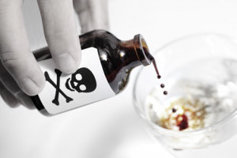Substance Abuse is Most Common Type of Poisoning According to Survey

A University of Illinois at Chicago (UIC) research study reported in the journal of Clinical Toxicology brought to light the fact that health surveys may be underestimating the number of U.S. poisonings by as much as 60 to 90 percent.
Researching Poisonings in the United States
Research determined that as of 2009, the leading cause of fatal injury in the nation was poisonings, surpassing deaths related to transportation and guns.
Researchers analyzed a compilation of data regarding poisoning-related hospital visits in Illinois for 2010. Information from hospital billing records; including exposure information, patient demographics and outcomes, was analyzed.
Researchers also scrutinized data on poisoning incidence garnered from four leading national health surveys. These included the National Health Interview Survey; the National Electronic Injury Surveillance System; the National Hospital Ambulatory Medical Care Survey; and the National health Interview Survey.
Study Findings
Researchers found the 2010 Illinois hospital visit charges were nearly $8 billion dollars, attributed to 425,491 cases. A majority of the visits were alcohol and illicit-drug related. Nearly half the patients seen were on an emergency room outpatient basis.
The study determined that the most common exposures were:
- Alcohol
- Drug dependence and/or abuse
- Cannabis (marijuana)
- Hallucinogens
- Opioid painkillers/relievers
- Cocaine
- Barbiturates
- Benzodiazepine
Deaths for both inpatients and outpatients were found to be rare. Outpatients logged a mortality rate of 0.78 percent; and inpatients a mortality rate of 1.82 percent.
In comparing national health survey results to the Illinois hospital data, researchers determined that the national health surveys were missing a consequential number of poisoning cases.
Co-author of the study, Lee Friedman, a UIC School of Public Health associate professor of environmental and occupation health sciences, noted that the poisoning definitions used by the national surveys frequently excluded the exposure to illicit drugs, alcohol and “adverse effects from prescribed drugs.” He further noted that the actual poisoning-related burden to society and to hospitals is “actually much higher than previously thought.”
Friedman pointed out that were the hospital billing records of other states to be analyzed, it would likely reveal the same results.
It is important that the definition of poisoning include alcohol and therapeutic drug reactions if a more accurate picture of the burden and magnitude of poisoning are to be gotten, according to Friedman.
Substance Abuse
The study found substance abuse to be the most common type of poisoning. It accounted for a little more than 50 percent of poisoning-related hospital charges totaling about $4 billion dollars.
Forty-four percent of outpatient cases were alcohol-exposure related, as were 31.3 percent of the inpatient cases.
Thirty-two percent of all the poisoning cases were attributed to adverse effects resulting from therapeutic agents.
Researchers found the costs for poisoning-related hospital admissions in Illinois were more than $7 billion dollars. Friedman noted those costs warrants a public education campaign.
According to Friedman, addressing smoking and its negative tobacco-related health effects have been well addressed from a public health standpoint, something similar needs to done regarding alcohol abuse. He cites the clear results from the study show the number of people abusing alcohol is underestimated, and “the suffering associated with it is astronomical.”
He suggests that warning labels like those found on cigarette packaging ought to be used to communicate alcohol-related risks such as heart disease, cancer, liver disease “and psychiatric disorders.”
Lead author of the study, Alison Krajewksi, a UIC School of Public Health graduate student noted that expanding poison control center resources could have a significant impact in reducing poisoning-related hospital visits and costs. Trained toxicologists taking calls on poison control center hotlines could differentiate for callers between poisoning cases requiring hospital attention—and cases that can be treated safely at home.

